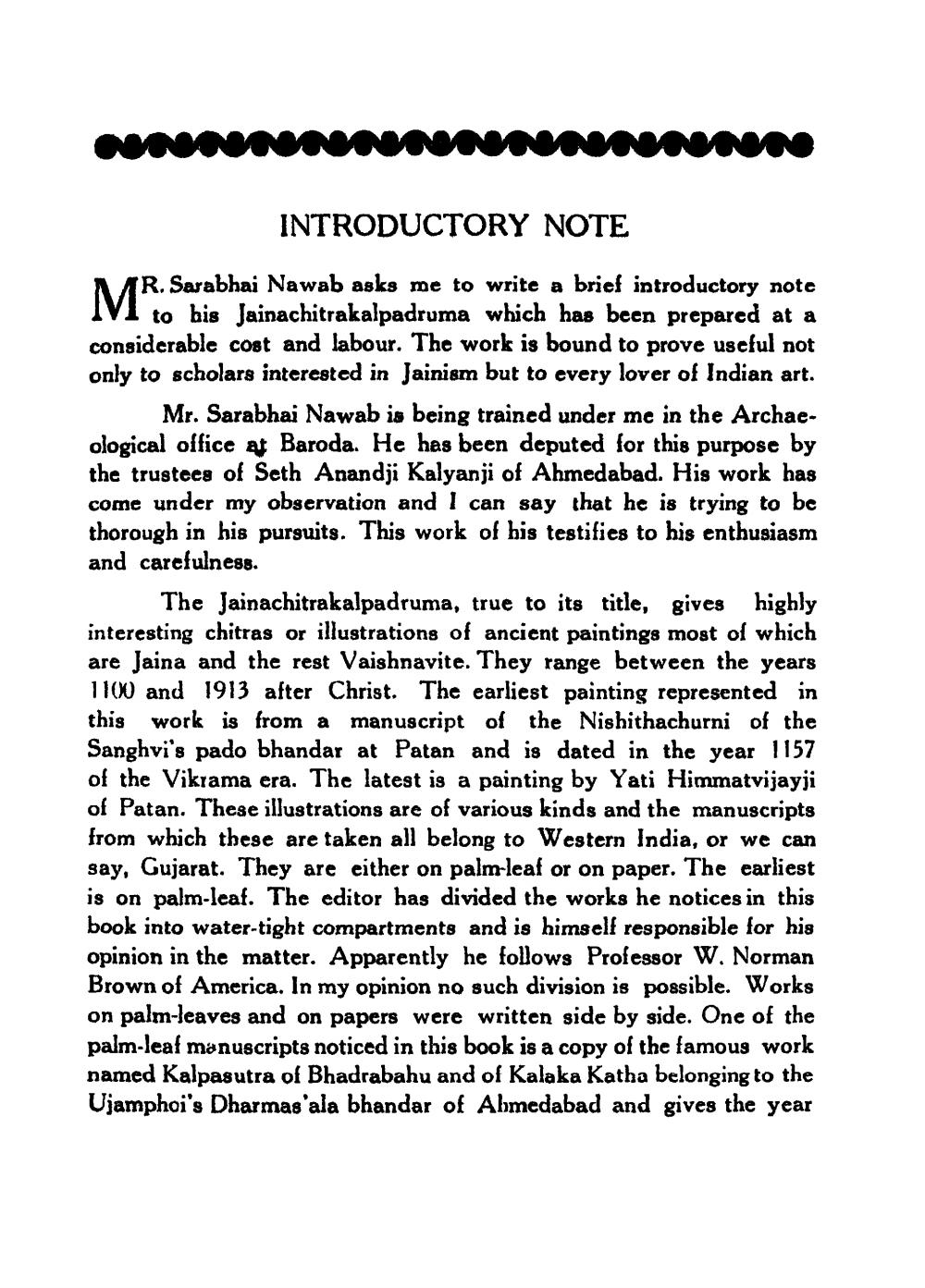________________
INTRODUCTORY NOTE
M R. Sarabhai Nawab asks me to write a brief introductory note
I to bis Jainachitrakalpadruma which has been prepared at a considerable cost and labour. The work is bound to prove useful not only to scholars interested in Jainism but to every lover of Indian art.
Mr. Sarabhai Nawab is being trained under me in the Archaeological office at Baroda. He has been deputed for this purpose by the trustees of Seth Anandji Kalyanji of Ahmedabad. His work has come under my observation and I can say that he is trying to be thorough in his pursuits. This work of his testifies to his enthusiasm and carefulness.
The Jainachitrakalpadruma, true to its title, gives highly interesting chitras or illustrations of ancient paintings most of which are Jaina and the rest Vaishnavite. They range between the years 1100 and 1913 after Christ. The earliest painting represented in this work is from a manuscript of the Nishithachurni of the Sanghvi's pado bhandar at Patan and is dated in the year 1157 of the Vikrama era. The latest is a painting by Yati Himmatvijayji of Patan. These illustrations are of various kinds and the manuscripts from which these are taken all belong to Western India, or we can say, Gujarat. They are either on palm-leaf or on paper. The earliest is on palm-leaf. The editor has divided the works he notices in this book into water-tight compartments and is himself responsible for his opinion in the matter. Apparently he follows Professor W. Norman Brown of America. In my opinion no such division is possible. Works on palm-leaves and on papers were written side by side. One of the palm-leaf manuscripts noticed in this book is a copy of the famous work named Kalpasutra of Bhadrabahu and of Kalaka Katha belonging to the Ujamphoi's Dharmas'ala bhandar of Abmedabad and gives the year




